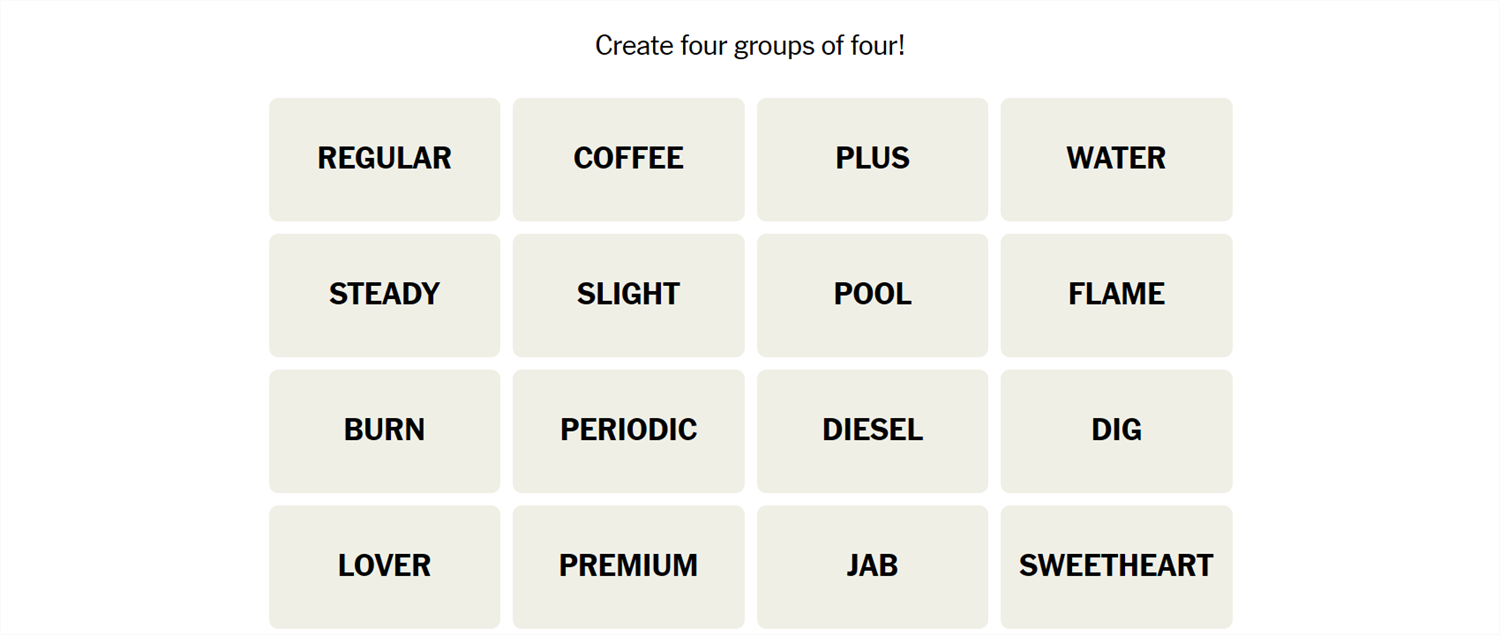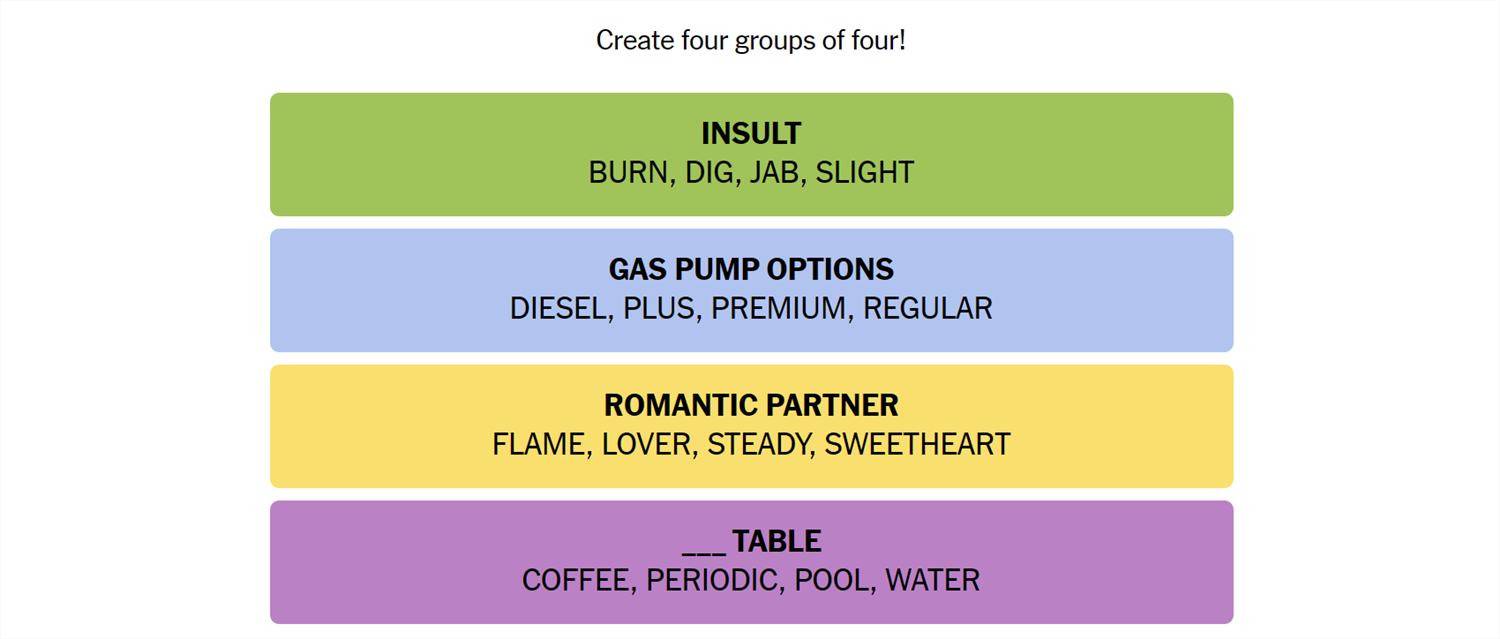
July 19Th New York Times Brainteaser Challenge: Solutions & Insights #404

July 19Th New York Times Brainteaser Challenge: Solutions & Insights #404
Quick Links
- What Is Connections?
- Hints for Today’s Connections Groups
- Today’s NYT Connections Answers
- How Did We Solve This Connections Game?
- How Do You Guess Connections Groups?
Connections is a game from the New York Times that challenges you to find the association between words. It sounds easy, but it isn’t—Connections categories can be almost anything, and they’re usually quite specific. If you need a hand getting the answers, we’ve got you covered.
What Is Connections?
Connections is a game from the New York Times. The objective is simple: sort 16 words into groups of 4. Each group of words will be connected by some common idea or theme. That common element could be anything. We have seen everything from games that rely on the number of letters in the words to categories that require you to spot an extra letter at the end of the word. Sometimes they’re references to economics, other times they reference fairy tales. There is no telling what sort of association there will be between words.
Once you’re confident you understand the connection, select 4 words, then hit “Submit.” You have only four attempts in total, so don’t be too guess-happy.
Hints for Today’s Connections Groups
Here are a few hints for the 404th Connections game to get you started:
- Yellow: Terms of endearment.
- Green: When you want to hurt someone’s feelings.
- Blue: Types of fuel.
- Purple: A flat surface with legs.

If you still need help, the actual group names are:
- Yellow: Romantic Partner
- Green: Insult
- Blue: Gas Pump Options
- Purple: ____ Table
Today’s NYT Connections Answers

Romantic Partner (Yellow):
Flame, Lover, Steady, Sweetheart
Insult (Green):
Burn, Dig, Jab, Slight
Gas Pump Options (Blue):
Diesel, Plus, Premium, Regular
___ Table (Purple):
Coffee, Periodic, Pool, Water
How Did We Solve This Connections Game?
July 19th was another surprisingly direct game!
The first word I noticed was burn, and my brain went first to the insult definition, rather than a physical injury. Thinking about synonyms for insult, jab, dig, and slight all seemed like good options to throw into a group together. Slight was the only outlier. Jabs, digs, and burns are usually verbal, while slights are usually actions. Either way, there is a clear connection. The Green group was “Insult.”
Diesel a petroleum-derived fuel, and that made it pretty easy to pick out plus, premium, and regular, since they refer to different octane levels available in standard gasoline. Blue was “Gas Pump Options.”
Lover and sweetheart are pretty common terms for a romantic partner of some kind, so I started looking for other words that might fit. Flame is a common enough term for a romantic partner of some kind, so I added that to the list. That left coffee, steady, periodic, pool, and water. I do love coffee, and would be flattered if someone used it as a term of endearment for me, but it definitely didn’t fit. Periodic seems almost insulting in a romantic context, so that word was out. Pool and water just make no sense at all.
That left steady. Steady isn’t a term I’ve heard frequently as a noun for a romantic partner, but you do hear “going steady” in the context of a progressing relationship.
Together, flame, lover, steady, and sweetheart were in the Yellow group, “Romantic Partners.”
The only remaining words were coffee, periodic, pool, and water. Coffee and periodic clued me in to the word “table” almost immediately, and that was actually the Purple group’s name: “____ Table.” Coffee, periodic, pool, and water are all words that take a specific definition when followed by the word table.
How Do You Guess Connections Groups?
There is no quick, reliable way to approach Connections like there is with Wordle, since Connections isn’t algorithmic. However, there are a few things to keep in mind that can help.
- Look for similar parts of speech. Are some words verbs and others nouns? Are some adjectives? Try mentally grouping them based on those categories and see if any other patterns jump out at you.
- Are the words synonyms? Sometimes categories will just be synonyms for a phrase, or very close to synonyms. Don’t rely too closely on this, though. Occasionally, Connections will deliberately throw in words that are sometimes synonyms to mislead you.
- Try saying the words. Sometimes, saying the words helps. One puzzle we saw included the words go, rate, faster, clip, pace, speed, move, commute, and hurry—all of which are obviously related to the idea of motion. However, when you say them, it becomes a little more obvious that only four (go, move, hurry, faster) are things you’d actually say to prompt someone to get moving.
- Expect the red herring . Connections usually has words that could be plausibly, yet incorrectly, grouped together. Take the words Bud, Corona, and Light, as an example. You might instinctively see those three words together and assume they’re lumped together in a category related to beer—but they weren’t.
- Look for distinct words. If a word on your board doesn’t have multiple meanings or can really only be used in one context, try using that word as the basis for a category.
- Shuffle the board. Sometimes, moving words around will help you look at them in new ways.
If you didn’t solve this one, don’t feel too bad—there’s always tomorrow! And those words may align with a topic you’re interested in, giving you a leg up on the competition.
Also read:
- [New] Disable Non-Specific YouTube Video Alerts for 2024
- [Updated] 2024 Approved What Is Apple M1 Chip?
- [Updated] In 2024, The Social Media Strategist's Guide to Adjustable Video Sizes on FB
- [Updated] Unveiling Ideal Frames Per Second For Excellent Slow-Mo Videos
- 2024 Approved Top Cloud Storages Essential Choices for You
- 2024 Approved Ultimate Top 8 Converter List for Sub to SRT
- Expert Tips to Correct Error #6 When Playing Dive Missions in CoD: Moden Warfare - PC Edition
- Gamers' Guide to Elite Streaming Platforms
- In 2024, The Science Behind Time Warp Visuals
- In 2024, Top Storytelling Screenplays that Transcend Genres
- Save and Enjoy Offline: Top-Downloading App for All MusicPlayOn Videos
- Top-Tier Writing Structure Space for 2024
- Updated In 2024, Premium Audio Excision Tools for Windows Media Files
- Title: July 19Th New York Times Brainteaser Challenge: Solutions & Insights #404
- Author: Mark
- Created at : 2024-12-22 18:41:03
- Updated at : 2024-12-24 20:05:40
- Link: https://some-guidance.techidaily.com/july-19th-new-york-times-brainteaser-challenge-solutions-and-insights-404/
- License: This work is licensed under CC BY-NC-SA 4.0.